Related Research Articles

In the Battle of Stalingrad, Germany and its allies fought the Soviet Union for control of the city of Stalingrad in Southern Russia. Marked by fierce close-quarters combat and direct assaults on civilians in air raids, it is one of the bloodiest battles in the history of warfare, with an estimated 2 million total casualties. After their defeat at Stalingrad, the German High Command had to withdraw considerable military forces from other theaters of war to replace their losses.
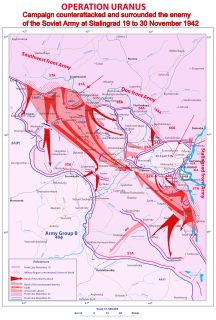
Operation Uranus was the codename of the Soviet Red Army's 19–23 November 1942 strategic operation on the Eastern Front of World War II which led to the encirclement of Axis forces in the vicinity of Stalingrad: the German Sixth Army, the Third and Fourth Romanian armies, and portions of the German Fourth Panzer Army. The Red Army carried out the operation at roughly the midpoint of the five-month long Battle of Stalingrad, aiming to destroy German forces in and around Stalingrad. Planning for Operation Uranus had commenced in September 1942, and developed simultaneously with plans to envelop and destroy German Army Group Center and German forces in the Caucasus. The Red Army took advantage of the German army's poor preparations for winter, and the fact that its forces in the southern Soviet Union were overstretched near Stalingrad, using weaker Romanian troops to guard their flanks; the offensive's starting points were established along the section of the front directly opposite Romanian forces. These Axis armies lacked heavy equipment to deal with Soviet armor.
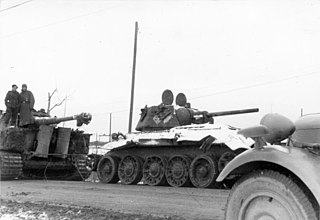
Operation Winter Storm, a German offensive in December 1942 during World War II, involved the German 4th Panzer Army failing to break the Soviet encirclement of the German 6th Army during the Battle of Stalingrad.

Konstantin Konstantinovich (Xaverevich) Rokossovsky was a Soviet and Polish officer who became Marshal of the Soviet Union, Marshal of Poland, and served as Poland's Defence Minister from 1949 until his removal in 1956 during the Polish October. He was among the most prominent Red Army commanders of World War II.

The 13th Panzer Division was an element of the German Army, the Wehrmacht, during World War II, established in 1940.

The 16th Infantry Division of the German Army was formed in 1934. On 26 August 1939 the division was mobilized for the invasion of Poland (1939). It participated in the Battle of France in August 1940. The division was then split, resulting in two independent units: The 16th Panzer Division and the 16th Motorized Infantry Division. The latter, from 1944 onward, combined with other non 16th elements, was known as the 116th Panzer Division.
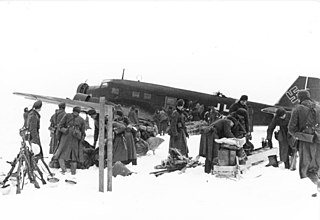
The Demyansk Pocket was the name given to the pocket of German troops encircled by the Red Army around Demyansk, south of Leningrad, during World War II's Eastern Front. The pocket existed mainly from 8 February to 21 April 1942.

The 13th Poltava Guards Rifle Division was an infantry division of the Red Army that earned honours during the Great Patriotic War.

The Raid on Tatsinskaya was a Soviet armoured raid deep into the German rear conducted by 24th Tank Corps under the command of Major General Vasily Mikhaylovich Badanov in late December 1942. It took place during Operation Little Saturn, on the heels of the successful encirclement of the Wehrmacht's 6th Army in the Battle of Stalingrad. The raid was designed to force the Germans to divert forces attempting to relieve the 6th Army. The Soviet force captured its objective, the Luftwaffe's airlift hub at the Tatsinskaya Airfield. The Soviet forces destroyed over 72 aircraft on the ground, but was left cut off and without supplies. Despite the loss of most of the tank corps during the ensuing breakout, the raid was a great operational victory.

Two Romanian armies, the Third and the Fourth, were involved in the Battle of Stalingrad, helping to protect the northern and southern flanks respectively, of the German 6th Army as it tried to conquer the city of Stalingrad defended by the Soviet Red Army in mid to late 1942. Overpowered and poorly equipped, these forces were unable to stop the Soviet November offensive, which punched through both flanks and left the 6th Army encircled in Stalingrad. The Romanians suffered enormous losses, which effectively ended their offensive capability on the Eastern Front for the remainder of the war.
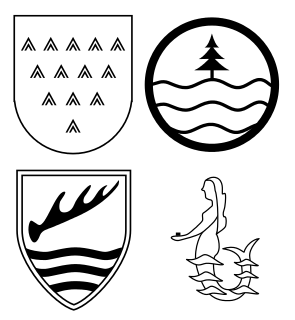
The 305th Infantry Division was a German Army unit that saw extensive, front-line action during World War II. This division was present at the Battle of Stalingrad, the Battle of Monte Cassino, and surrendered to U.S. Army's 88th Infantry Division in Northern Italy near Trento in late April 1945.
The 79th Infantry Division(79. Infanterie-Division) was an infantry division of Nazi Germany's Wehrmacht during World War II.
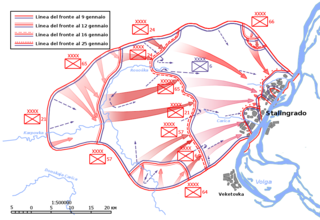
Operation Koltso was the last part of the Battle of Stalingrad. It resulted in the capitulation of the remaining Axis forces encircled in the city.

The 369th (Croatian) Reinforced Infantry Regiment was a regiment of the German Army raised to fight on the Eastern Front during World War II. The regiment was formed in July 1941 from Croatian volunteers from the Independent State of Croatia (NDH), including a Bosnian Muslims battalion, it was commonly referred to as the Croatian Legion. The troops swore a joint oath of allegiance to the Führer, the Poglavnik, the German Reich and the NDH. The unit was sent to the Russian front where it was attached to the 100. Jäger-Division. In 1943, as part of the 6th Army, it was the only non-German unit to participate in the battle of Stalingrad where it was virtually destroyed. On 31 January 1943, the 800 surviving Croatian legionaries, led by their commander Marko Mesić, surrendered to the Red Army.
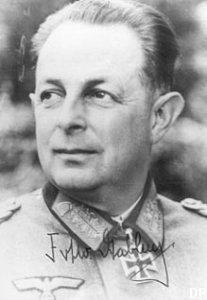
Eccard Freiherr von Gablenz was a German general in the Wehrmacht during World War II who commanded several divisions. He participated in the campaigns of Poland, France and the invasion of the Soviet Union. Von Gablenz stayed on the Russian Front from 1941 to 1943. He later assumed command of the 232nd Infantry Division in Italy, a command he held until the final surrender in May 1945.

The 389th Infantry Division was a German division of the Wehrmacht in the Second World War, which fought for example in the Battle of Stalingrad. It was formed on 27 January 1942 in Milowitz.

The 342nd Infantry Division was a formation of the German Wehrmacht during World War II. Established on 19 November 1940, it was formed from elements of two existing divisions. It first served as part of the occupation forces in France between June and September 1941 and was then largely responsible for the brutal repression of resistance in eastern parts of Axis-occupied Yugoslavia between September 1941 and February 1942.
The 300th Rifle Division began service as a standard Red Army rifle division shortly after the German invasion, and fought in the southwestern part of the Soviet-German front for nearly two years following. It was able to escape the encirclement east of Kiev in September, 1941, and then fought to defend, and later to try to liberate, the city of Kharkov during 1941-42. After falling back under the weight of the German 1942 summer offensive, the division began distinguish itself during Operation Uranus in late 1942, when it helped defeat the German attempt to relieve Sixth Army and later in the pursuit of the defeated Axis forces and the second liberation of Rostov-na-Donu. In recognition of these successes it was raised to Guards status as the 87th Guards Rifle Division. A second 300th Rifle Division was raised a few months later and fought briefly but very successfully against the Japanese in Manchuria in August 1945. The second formation became the 3rd Tank Division in the Far East postwar and was redesignated as the 46th Tank Division in 1957 before disbanding in 1959.
The 169th Rifle Division was formed as an infantry division of the Red Army beginning in late August, 1939, as part of the pre-war Soviet military build-up. It saw service in the occupation force in western Ukraine in September. The German invasion found it still in Ukraine, fighting back to the Dniepr until it was nearly destroyed. The partly-rebuilt division fought again at Kharkov, then was pulled back into reserve and sent deep into the Caucasus where it fought south of Stalingrad throughout that battle. Following another major redeployment the division helped in the liberation of Oryol, and the following race to the Dniepr. In 1944 and 1945 it was in 1st and 2nd Belorussian Fronts, participating successfully in the offensives that liberated Belarus, Poland, and conquered eastern Germany. It ended the war on the Elbe River.

The 376th Infantry Division was an infantry division of the German Army during World War II, active from 1942 to 1944 in two separate instances.